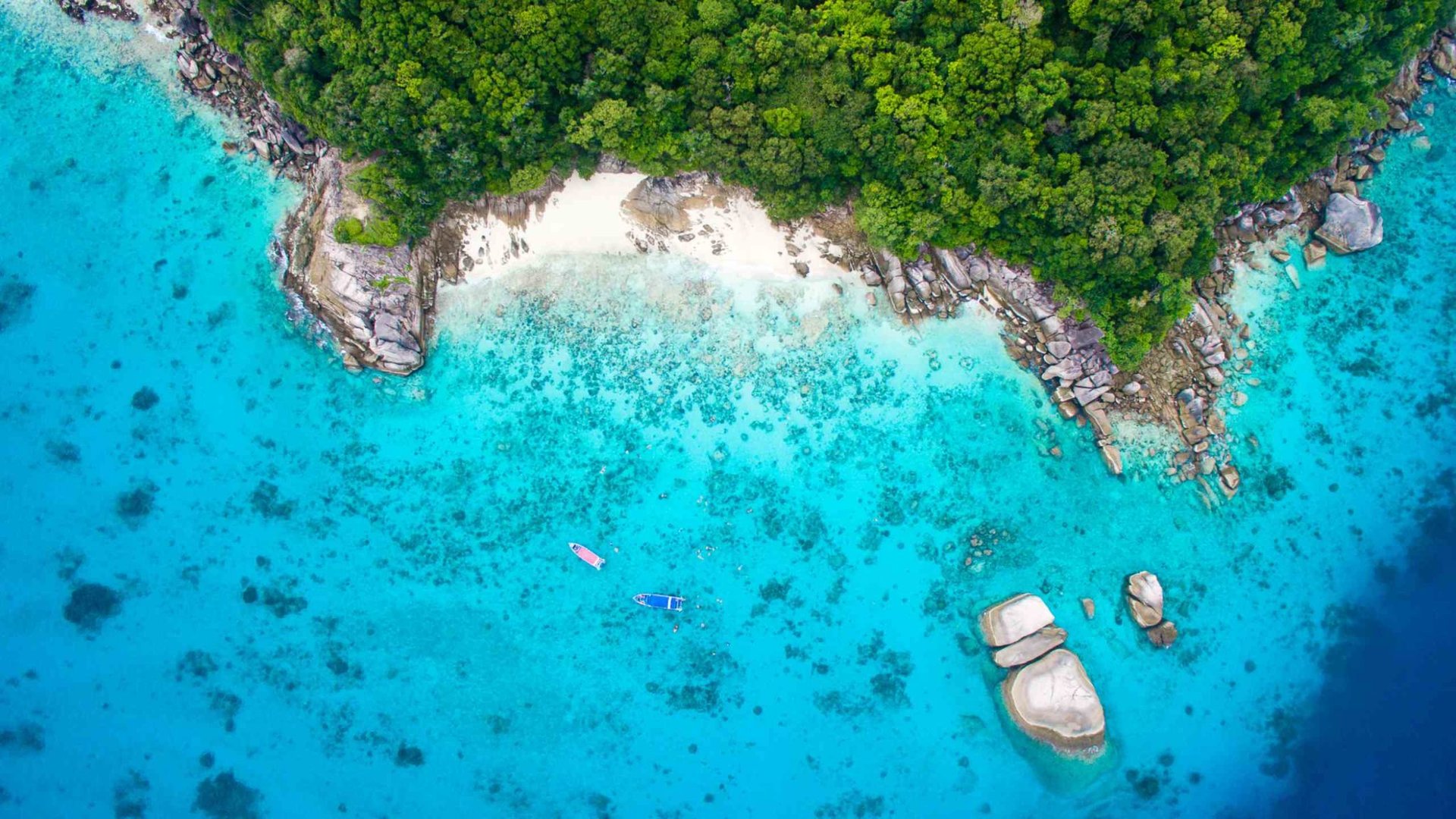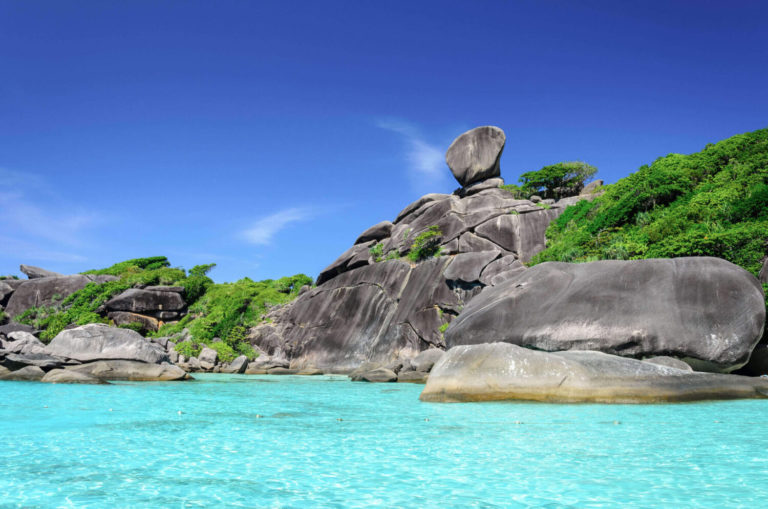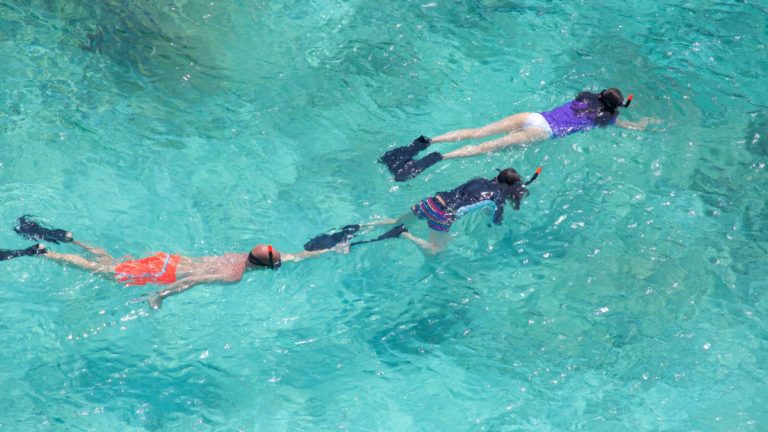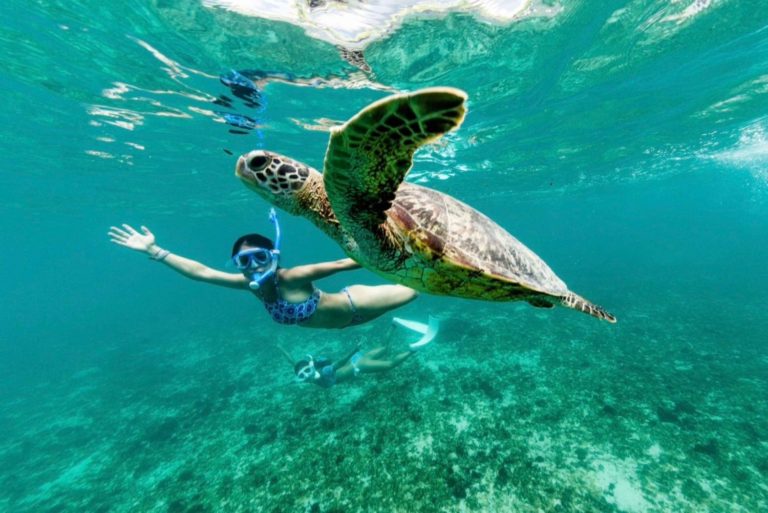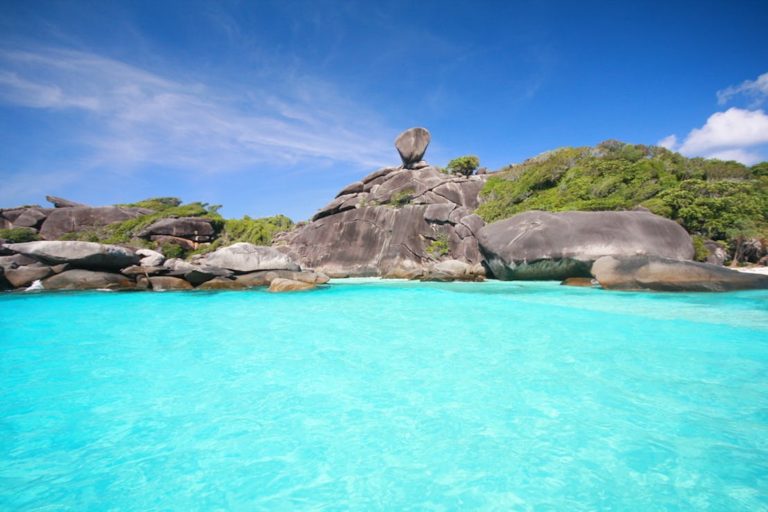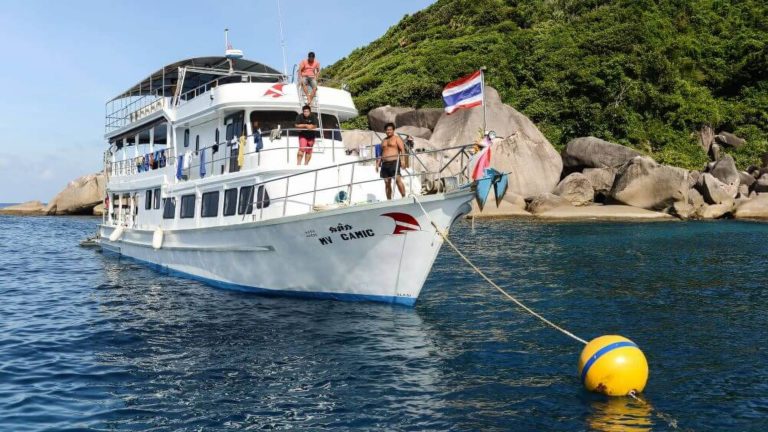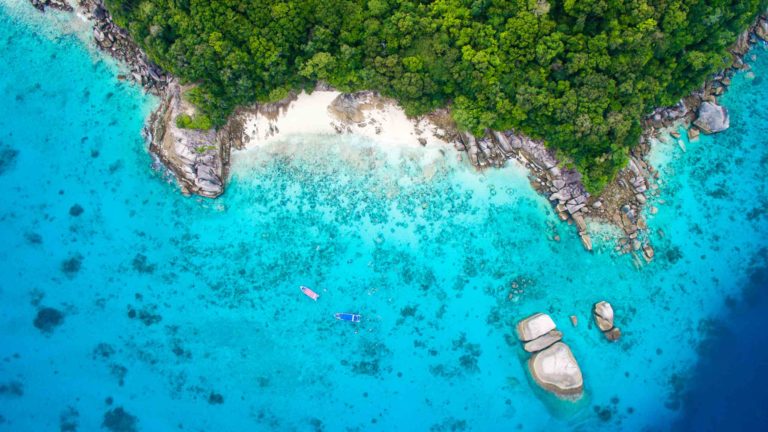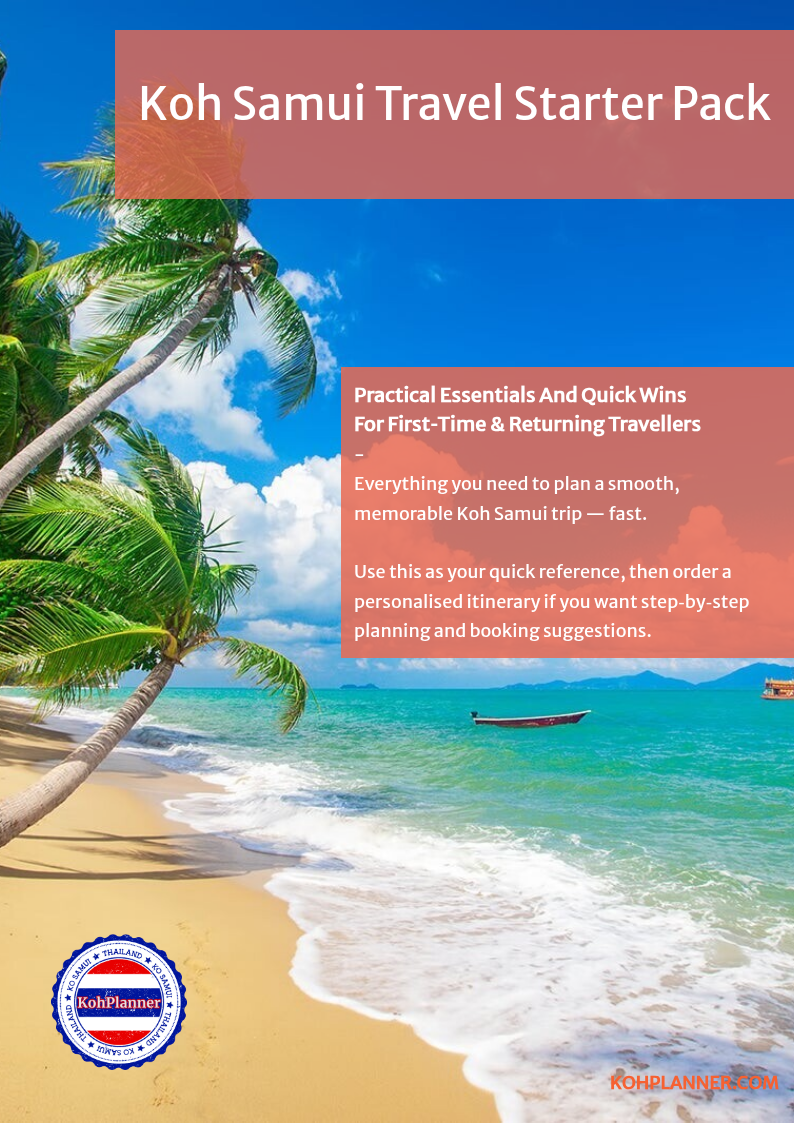Similan Islands National Park
Located off the western coast of southern Thailand in the Andaman Sea, the Similan National Park is an archipelago of 11 stunningly beautiful islands, known for their white sandy beaches, crystal-clear waters, and breathtaking underwater scenery. Established in 1982, the park covers an area of approximately 140 square kilometers, encompassing both the islands and the surrounding marine areas. This tropical paradise is a must-visit destination for beach lovers, scuba divers, and wildlife enthusiasts alike.
The Similan Islands were named after the Malay word “sembilan,” which means “nine,” as the archipelago originally consisted of only nine islands. In 1998, two additional islands were added to the park, increasing the count to 11. The islands are numbered one to eleven, starting from the south, but they also have Thai names. The Similan National Park has been recognized as a UNESCO World Heritage Site, ensuring its protection and preservation for future generations.
The Similan National Park consists of 11 islands: Ko Huyong, Ko Payang, Ko Payan, Ko Miang, Ko Ha, Ko Payu, Ko Bon, Ko Tachai, Ko Similan, Ko Ba Ngu, and Ko Hin Pousar. The islands are divided into two main groups, with Ko Bon and Ko Tachai belonging to the northern group, and the other nine islands in the southern group.
The park is home to some of the most diverse and vibrant marine ecosystems in the world, with more than 500 species of hard and soft corals, over 200 species of fish, and various species of sea turtles, dolphins, and sharks. The islands are also a breeding ground for several bird species, including the Nicobar pigeon, white-bellied sea eagle, and the pied imperial pigeon.
Flora and Fauna
The Similan Islands are covered in lush tropical rainforests, with a mix of evergreen and deciduous vegetation. The islands’ plant life mainly consists of shrubs, bushes, and trees such as the banyan, bamboo, and rubber. The coastal areas are lined with mangroves and sea almond trees, which provide nesting sites for various bird species.
The islands are a haven for wildlife, with over 16 mammal species, including bats, flying lemurs, and squirrels. Reptiles, such as monitor lizards and geckos, can also be found on the islands. The marine life surrounding the Similan Islands is nothing short of spectacular. You may encounter whale sharks, manta rays, barracudas, and various species of sea turtles.
How to Get There
The Similan National Park is accessible only by boat from the mainland. The nearest pier is in Khao Lak, a popular tourist destination in Phang Nga province, approximately 70 kilometers north of Phuket. There are several options for getting to the park, including speedboats, dive boats, and liveaboard vessels. The boat journey from Khao Lak takes about 60 to 90 minutes, depending on the type of boat and sea conditions.
Where to Stay and Eat
There are no hotels or resorts on the Similan Islands, as overnight stays are restricted to maintain the park’s pristine environment. However, limited accommodation options are available on Ko Miang (Island 4), which is the park’s headquarters. Here you can find basic bungalows, as well as tents for rent. It’s important to book in advance, as availability is limited, and the park is closed during the monsoon season (from mid-May to mid-October).
Dining options within the park are limited to the park headquarters on Ko Miang, where a small canteen serves simple Thai dishes and snacks. Alternatively, if you’re visiting the islands on a day trip or as part of a liveaboard tour, meals are usually provided on board.
For a broader range of accommodations and dining options, visitors can stay in Khao Lak or other nearby towns on the mainland. These areas offer various types of accommodations, from budget guesthouses to luxury resorts, as well as a diverse selection of restaurants, cafes, and bars.
Scuba Diving and Snorkeling: The Similan Islands are renowned for their world-class diving sites, with crystal-clear waters, abundant marine life, and fascinating underwater landscapes. Popular dive sites include East of Eden, Elephant Head Rock, and Richelieu Rock. Snorkeling is also a fantastic way to explore the vibrant coral reefs and marine life around the islands.
Island Hopping: Exploring the picturesque islands is a must-do activity for visitors to the Similan National Park. Each island has its unique charm, from the stunning beaches of Ko Similan (Island 8) to the lush forests of Ko Miang (Island 4). Island-hopping tours are available, allowing you to experience the beauty of these islands up close.
Wildlife Watching: The Similan Islands are home to diverse wildlife, both on land and in the water. Birdwatching is a popular activity on the islands, and visitors can spot various bird species, such as the Nicobar pigeon and the white-bellied sea eagle. In the surrounding waters, keep an eye out for dolphins, sea turtles, and even whale sharks during their migration season.
Beach Relaxation: The pristine white sandy beaches of the Similan Islands are perfect for relaxation and sunbathing. Soak in the sun, take a leisurely swim in the turquoise waters, or simply unwind and enjoy the breathtaking scenery.
The Similan National Park is closed during the monsoon season, from mid-May to mid-October. Plan your visit accordingly, and always check the weather forecast before departing.
Ensure you bring plenty of sunscreen, a hat, and sunglasses, as the sun can be intense on the islands.
It's essential to respect the park's rules and guidelines, which include not touching or disturbing the marine life and not littering. Help preserve the natural beauty of the islands for future generations to enjoy.
If you're prone to seasickness, consider taking medication before embarking on your journey to the islands.
The Similan National Park is an ideal destination for various types of travelers, including beach lovers, scuba divers, snorkelers, wildlife enthusiasts, and photographers. The stunning scenery, pristine beaches, and diverse marine life make it a popular choice for honeymooners and families alike. However, it's important to note that the islands are relatively undeveloped, with limited facilities and accommodations. Travelers seeking a more remote, natural experience away from the hustle and bustle of typical tourist destinations will particularly enjoy visiting the Similan Islands.
Sorry, no records were found. Please adjust your search criteria and try again.
Sorry, unable to load the Maps API.

